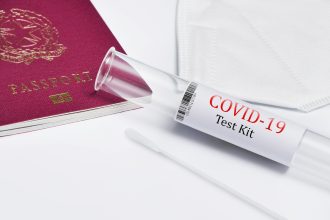Perfect Egg Separation: 7 Pro Tips for Flawless Results
Ever found yourself staring at a recipe, only to dread the step that calls for “separated eggs”? Many home cooks and bakers struggle with achieving a clean break, often ending up with a broken yolk contaminating precious egg whites. But what if there was a way to make perfect egg separation effortless, ensuring both components are ready for their starring roles? This guide will unveil the secrets to flawless egg separation, transforming a daunting task into a simple kitchen skill.
Why Master Perfect Egg Separation?
The ability to cleanly separate eggs is more than just a culinary party trick; it’s a fundamental skill that unlocks a world of delicious possibilities. Whether you’re aiming for sky-high meringues, delicate soufflés, rich custards, or light-as-air angel food cakes, the purity of your egg whites and yolks is paramount.
- For Delicate Meringues: Any trace of yolk fat can prevent egg whites from whipping into stiff, stable peaks.
- Rich Custards and Sauces: Yolks provide unparalleled richness and emulsifying properties essential for dishes like crème brûlée or hollandaise.
- Healthier Recipes: Separating allows for specific uses, such as egg white omelets for a lower-cholesterol option.
Understanding the Anatomy of an Egg for Easier Separation
Before diving into techniques, a quick understanding of an egg’s structure can help. The yolk, rich in fat, is suspended within the albumen (egg white), which is mostly protein and water. Chalazae, the rope-like strands on either side of the yolk, anchor it in place. The goal of separation is to cleanly isolate the fat-laden yolk from the fat-free white.
Methods for Perfect Egg Separation
There isn’t one single “right” way to separate an egg. Different methods suit different comfort levels and kitchen setups. Experiment to find what works best for you!
The Shell-to-Shell Method: A Classic Approach
This traditional method involves cracking the egg in half and gently passing the yolk back and forth between the two shell halves, allowing the white to fall into a bowl below. It requires a steady hand and practice to avoid piercing the yolk. Ensure your shells have a clean, sharp break.
The Hand Method: For the Brave and Bold
For those who don’t mind getting a little messy, the hand method is incredibly effective. Crack the egg into your clean hand, then gently open your fingers, allowing the egg white to slip through into a bowl. The yolk remains in your palm. Remember to wash your hands thoroughly before and after!
Gadgets & Tools: Are They Worth It?
Various kitchen gadgets, from slotted egg separators to squeeze bottles, promise easy separation. While they can be helpful, many seasoned cooks find them unnecessary. A simple slotted spoon or even a clean plastic bottle can also be used to suction out the yolk.
7 Expert Tips for Flawless Egg Separation Every Time
Achieving perfect egg separation consistently comes down to a few key practices. Implement these tips, and you’ll wonder why you ever struggled.
- Start with Cold Eggs (Then Warm if Needed): Eggs are easiest to separate when cold, as the yolk membrane is firmer and less likely to break. However, if your recipe requires room temperature egg whites for whipping, separate them cold and then let the whites warm up.
- Use a Clean, Dry Bowl: Any grease or moisture in your bowl can sabotage your efforts, especially when whipping whites. Always ensure your equipment is spotless.
- Work One Egg at a Time: Separate each egg into a small, separate bowl first. Once you’re sure the yolk is intact and the whites are clean, transfer them to larger collection bowls. This prevents one bad egg from ruining an entire batch.
- Gentle Handling is Key: Whether using shells or your hands, always be delicate. The yolk membrane is fragile.
- Mind the Chalazae: These stringy bits are harmless but can be removed from the whites if you’re aiming for an incredibly smooth texture, especially for meringues. You can usually scoop them out with a clean spoon or fork.
- Practice Makes Perfect: Like any kitchen skill, egg separation improves with repetition. Don’t be discouraged by initial failures.
- What to Do with Separated Egg Parts: Always have separate, clearly labeled bowls ready for your whites and yolks. This organization prevents cross-contamination and makes subsequent steps smoother.
Creative Uses for Your Separated Egg Whites and Yolks
Once you’ve mastered perfect egg separation, you’ll have two incredibly versatile ingredients at your disposal. Don’t let either go to waste!
Delicious Egg White Recipes
- Meringues and Pavlovas: The classic use, turning whites into sweet, airy confections.
- Angel Food Cake: A light, fluffy cake that relies solely on whipped egg whites for its structure.
- Egg White Omelets: A high-protein, low-fat breakfast option.
- Seven-Minute Frosting: A glossy, marshmallow-like topping perfect for cakes.
Rich Egg Yolk Creations
- Custards and Curds: Lemon curd, pastry cream, and crème anglaise owe their richness to egg yolks.
- Hollandaise Sauce: An emulsified sauce essential for Eggs Benedict, made with egg yolks and butter.
- Mayonnaise: Another classic emulsion where egg yolks act as the primary binder.
- Pasta Dough: Many fresh pasta recipes use extra egg yolks for a richer, more tender dough.
For more in-depth recipes utilizing separated eggs, explore resources like King Arthur Baking’s meringue collection or Serious Eats’ guide to egg yolk uses.
Troubleshooting Common Egg Separation Problems
Even with the best techniques, mishaps can occur. Here’s how to handle common issues.
Broken Yolk? Don’t Panic!
If a yolk breaks and a tiny bit gets into the whites, it’s usually salvageable. Use a clean spoon or even an empty eggshell half to scoop out the offending yolk piece. Be quick and precise. If too much yolk has mixed in, the whites might not whip properly, so it’s best to reserve them for another use where stiffness isn’t crucial (e.g., scrambled eggs or an omelet).
Tiny Bit of Yolk in Whites?
A very small speck might not ruin your whites completely, but for critical recipes like meringues, it’s best to remove it. The fat in the yolk inhibits the whites from aerating properly. A clean finger or a piece of eggshell can act like a magnet to pick up tiny yolk fragments.
Mastering perfect egg separation is a foundational skill that will significantly enhance your culinary repertoire. With practice and these expert tips, you’ll confidently tackle any recipe requiring separated eggs, ensuring your dishes always achieve their intended texture and flavor. No more wasted yolks or collapsed meringues – just flawless results every time!
What’s your go-to egg separation trick? Share your tips and experiences in the comments below!
Featured image provided by Pexels — photo by Pavel Danilyuk








